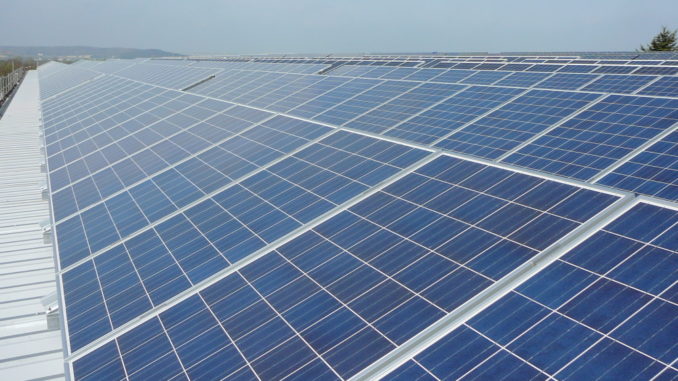
An industrial scale solar farm on a site the size of nearly 230 football pitches has been approved after planners heard it had the support of local residents.
Hambleton District Council’s planning committee heard Lightsource BP’s 49.9 megawatts project would be sited in a well screened area to the south east of Kirkby Fleetham and north east of Little and Great Fencote, near Bedale.
The solar farm has become the fifth to be approved in the district since one at Ainderby Steeple, near Northallerton was approved in 2014. The other arrays are sited at Dalton and Husthwaite, near Thirsk and another near Easingwold.
Councillors highlighted how the lack of opposition to the major scheme, which would generate enough electricity to power the equivalent of 15,730 houses annually, was remarkable.
In July, another 49.9 megawatts solar farm scheme, less than 20 miles away in South Stainley, north of Harrogate, attracted numerous objections from local residents over its impact on the landscape and nearby public rights of way.
However, the meeting heard during the six-month construction phase, the firm had calculated that there would be 2,480 heavy goods vehicle journeys to and from the site.
Alison Booth, of Kirby Fleetham with Fencote Parish Council told members there was a village consensus in favour of the solar farm, but concerns remained over the effect of construction lorries and called for a temporary 20mph speed limit.
She said: “Fear of traffic can affect people’s quality of life and the needs or more and more road users must be taken into account.”
Councillors suggested a number of different solutions could be discussed with the highways authority.
Richard Turner, of Lightsource BP, said unlike its competitors, the firm operated its own solar sites which meant it would remain active in the Kirby Fleetham community for decades to come. He said the scheme would avoid 19,800 tonnes of carbon emissions annually, which was the equivalent of taking 4,210 cars off the roads.
Mr Turner said: “Our application presents a real opportunity to significantly reduce carbon emissions and help tackle climate change on what is largely low-grade agricultural land.”
The meeting was told an archaeological study had revealed evidence of a previously unrecorded complex, multi-phase settlement at the site and the applicant had agreed a mitigation strategy which included trial trenching.
Members were told while deep ploughing could lead to the degrading of archaeological deposits, the solar panels would help preserve ancient items beneath the ground.


Be the first to comment